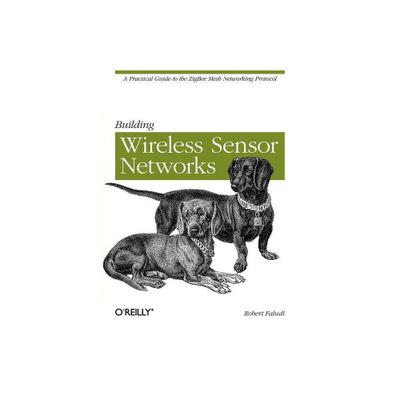Home
Resource Management for Energy and Spectrum Harvesting Sensor Networks
Loading Inventory...
Barnes and Noble
Resource Management for Energy and Spectrum Harvesting Sensor Networks
Current price: $54.99


Barnes and Noble
Resource Management for Energy and Spectrum Harvesting Sensor Networks
Current price: $54.99
Loading Inventory...
Size: OS
*Product Information may vary - to confirm product availability, pricing, and additional information please contact Barnes and Noble
This SpringerBrief offers a comprehensive review and in-depth discussion of the current research on resource management. The authors explain how to best utilize harvested energy and temporally available licensed spectrum. Throughout the brief, the primary focus is energy and spectrum harvesting sensor networks (ESHNs) including energy harvesting (EH)-powered spectrum sensing and dynamic spectrum access.
To efficiently collect data through the available licensed spectrum, this brief examines the joint management of energy and spectrum. An EH-powered spectrum sensing and management scheme for Heterogeneous Spectrum Harvesting Sensor Networks (HSHSNs) is presented in this brief. The scheme dynamically schedules the data sensing and spectrum access of sensors in ESHSNs to optimize the network utility, while considering the shastic nature of EH process, PU activities and channel conditions.
This brief also provides useful insights for the practical resource management scheme design for ESHSNs and motivates a new line of thinking for future sensor networking. Professionals, researchers, and advanced-level students in electrical or computer engineering will find the content valuable.
To efficiently collect data through the available licensed spectrum, this brief examines the joint management of energy and spectrum. An EH-powered spectrum sensing and management scheme for Heterogeneous Spectrum Harvesting Sensor Networks (HSHSNs) is presented in this brief. The scheme dynamically schedules the data sensing and spectrum access of sensors in ESHSNs to optimize the network utility, while considering the shastic nature of EH process, PU activities and channel conditions.
This brief also provides useful insights for the practical resource management scheme design for ESHSNs and motivates a new line of thinking for future sensor networking. Professionals, researchers, and advanced-level students in electrical or computer engineering will find the content valuable.


















